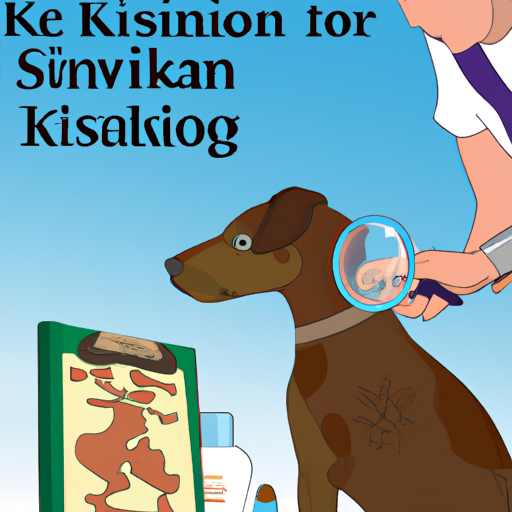As a loving dog caregiver, your pet’s health is your top priority. One common issue that you might encounter is skin infection. Learning how to effectively treat this issue can help your furry friend feel better in no time.
H2: Understanding Skin Infections in Dogs
Dog skin infections, otherwise known as pyoderma, can be caused by several factors. These might include allergies, hormonal disorders, or parasites such as fleas and mites. Infections can be superficial, affecting just the skin, or deep, involving the tissues beneath.
Common signs of skin infections in dogs include:
* Redness
* Itching
* Pustules
* Hair loss
* Crusting and scaling
H2: Initial Steps to Take at Home
If you notice any signs of skin infection on your dog, you can take some preliminary steps at home before visiting the vet:
- Clean the area: Use a mild antiseptic to clean the infected area. Ensure to pat it dry afterwards.
- Prevent your dog from licking or scratching the area: You can use an Elizabethan collar or apply a bitter-tasting topical product to discourage this.
- Apply a topical ointment: Over-the-counter antibiotic ointments can help, but it’s best to consult your vet first.
H2: When to Visit the Vet
If the infection does not improve within a couple of days, or if it worsens, visit your vet promptly. They can conduct tests to determine the cause and the best course of treatment.
| Tests | Purpose |
|---|---|
| Skin scraping | To check for mites |
| Fungal culture | To identify any fungal infections |
| Skin biopsy | To rule out other conditions if the infection is persistent |
H2: Treating the Infection
Treatment depends on the cause and severity of the infection. Your vet may recommend:
- Topical treatments: These include medicated shampoos, sprays, and ointments.
- Oral medication: Antibiotics or antifungal medication may be necessary for severe or deep infections.
- Treating the underlying cause: If the infection is due to allergies or a hormonal disorder, your vet will address these issues as well.
H2: Preventing Future Infections
Prevention is always better than cure. Here are some ways to prevent skin infections in your dog:
- Regular grooming and bathing with dog-appropriate products.
- Regular flea and tick prevention.
- A balanced diet to maintain a healthy immune system.
- Regular vet check-ups.
FAQs
Q: Are skin infections in dogs contagious to humans?
A: Some, like ringworm, are contagious. Always wear gloves when treating your dog’s skin infection.
Q: Can I use human skin infection ointments on my dog?
A: It’s best to consult your vet first, as some ingredients may be harmful to dogs.
Remember, as a loving caregiver, your dog’s health and happiness rest in your hands. Always keep an eye out for any changes in your dog’s behavior or appearance, and consult a vet if you’re unsure. Healthy dogs are happy dogs!



